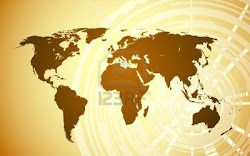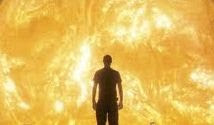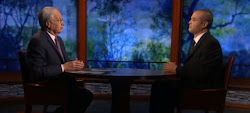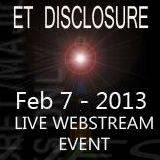http://www.telegraph.co.uk/news/6425269/The-real-climate-change-catastrophe.html
Love and Light.
David
The real climate change catastrophe
In a startling new book, Christopher Booker reveals how a handful of scientists, who have pushed flawed theories on global warming for decades, now threaten to take us back to the Dark Ages
By Christopher Booker
Published: 7:00AM GMT 25 Oct 2009
Next Thursday marks the first anniversary of one of the most remarkable events ever to take place in the House of Commons. For six hours MPs debated what was far and away the most expensive piece of legislation ever put before Parliament.
The Climate Change Bill laid down that, by 2050, the British people must cut their emissions of carbon dioxide by well over 80 per cent. Short of some unimaginable technological revolution, such a target could not possibly be achieved without shutting down almost the whole of our industrialised economy, changing our way of life out of recognition.
Even the Government had to concede that the expense of doing this – which it now admits will cost us £18 billion a year for the next 40 years – would be twice the value of its supposed benefits. Yet, astonishingly, although dozens of MPs queued up to speak in favour of the Bill, only two dared to question the need for it. It passed by 463 votes to just three.
One who voted against it was Peter Lilley who, just before the vote was taken, drew the Speaker’s attention to the fact that, outside the Palace of Westminster, snow was falling, the first October snow recorded in London for 74 years. As I observed at the time: “Who says that God hasn’t got a sense of humour?”
By any measure, the supposed menace of global warming – and the political response to it – has become one of the overwhelmingly urgent issues of our time. If one accepts the thesis that the planet faces a threat unprecedented in history, the implications are mind-boggling. But equally mind-boggling now are the implications of the price we are being asked to pay by our politicians to meet that threat. More than ever, it is a matter of the highest priority that we should know whether or not the assumptions on which the politicians base their proposals are founded on properly sound science.
This is why I have been regularly reporting on the issue in my column in The Sunday Telegraph, and this week I publish a book called The Real Global Warming Disaster: Is the obsession with climate change turning out to be the most costly scientific delusion in history?.
There are already many books on this subject, but mine is rather different from the rest in that, for the first time, it tries to tell the whole tangled story of how the debate over the threat of climate change has evolved over the past 30 years, interweaving the science with the politicians’ response to it.
It is a story that has unfolded in three stages. The first began back in the Seventies when a number of scientists noticed that the world’s temperatures had been falling for 30 years, leading them to warn that we might be heading for a new ice age. Then, in the mid-Seventies, temperatures started to rise again, and by the mid-Eighties, a still fairly small number of scientists – including some of those who had been predicting a new ice age – began to warn that we were now facing the opposite problem: a world dangerously heating up, thanks to our pumping out CO₂ and all those greenhouse gases inseparable from modern civilisation.
In 1988, a handful of the scientists who passionately believed in this theory won authorisation from the UN to set up the body known as the Intergovernmental Panel on Climate Change (IPCC). This was the year when the scare over global warming really exploded into the headlines, thanks above all to the carefully staged testimony given to a US Senate Committee by Dr James Hansen, head of NASA’s Goddard Institute for Space Studies (GISS), also already an advocate for the theory that CO₂ was causing potentially catastrophic warming.
The disaster-movie scenario that rising levels of CO₂ could lead to droughts, hurricanes, heatwaves and, above all, that melting of the polar ice caps, which would flood half the world’s major cities, struck a rich chord. The media loved it. The environmentalists loved it. More and more politicians, led by Al Gore in the United States, jumped on the bandwagon. But easily their most influential allies were the scientists running the new IPCC, led by a Swedish meteorologist Bert Bolin and Dr John Houghton, head of the UK Met Office.
The IPCC, through its series of weighty reports, was now to become the central player in the whole story. But rarely has the true nature of any international body been more widely misrepresented. It is commonly believed that the IPCC consists of “1,500 of the world’s top climate scientists”, charged with weighing all the scientific evidence for and against “human-induced climate change” in order to arrive at a “consensus”.
In fact, the IPCC was never intended to be anything of the kind. The vast majority of its contributors have never been climate scientists. Many are not scientists at all. And from the start, the purpose of the IPCC was not to test the theory, but to provide the most plausible case for promoting it. This was why the computer models it relied on as its chief source of evidence were all programmed to show that, as CO₂ levels continued to rise, so temperatures must inevitably follow.
One of the more startling features of the IPCC is just how few scientists have been centrally involved in guiding its findings. They have mainly been British and American, led for a long time by Dr Houghton (knighted in 1991) as chairman of its scientific working group, who in 1990 founded the Met Office’s Hadley Centre for research into climate change. The centre has continued to play a central role in selecting the IPCC’s contributors to this day, and along with the Climate Research Unit run by Professor Philip Jones at the University of East Anglia, controls HadCrut, one of the four official sources of global temperature data (another of the four, GIStemp, is run by the equally committed Dr Hansen and his British-born right-hand man, Dr Gavin Schmidt).
With remarkable speed, from the time of its first report in 1990, the IPCC and its computer models won over many of the world’s politicians, led by those of the European Union. In 1992, the UN staged its extraordinary Earth Summit in Rio, attended by 108 prime ministers and heads of state, which agreed the UN Framework Convention on Climate Change; and this led in 1997 to the famous Kyoto Protocol, committing the world’s governments to specific targets for reducing CO₂.
Up to this point, the now officially accepted global-warming theory seemed only too plausible. Both CO₂ levels and world temperatures had continued to rise, exactly as the IPCC’s computer models predicted. We thus entered the second stage of the story, lasting from 1998 to 2006, when the theory seemed to be carrying everything before it.
The politicians, most notably in the EU, were now beginning to adopt every kind of measure to combat the supposed global-warming menace, from building tens of thousands of wind turbines to creating elaborate schemes for buying and selling the right to emit CO₂, the gas every plant in the world needs for life.
But however persuasive the case seemed to be, there were just beginning to be rather serious doubts about the methods being used to promote it. More and more questions were being asked about the IPCC’s unbalanced approach to evidence – most notably in its promotion of the so-called “hockey stick” graph, produced in time for its 2001 report by a hitherto obscure US scientist Dr Michael Mann, purporting to show how global temperatures had suddenly been shooting up to levels quite unprecedented in history.
One of the hockey stick’s biggest fans was Al Gore, who in 2006 made it the centrepiece of his Oscar-winning film, An Inconvenient Truth. But it then turned out that almost every single scientific claim in Gore’s film was either wildly exaggerated or wrong. The statistical methods used to create the hockey-stick graph were so devastatingly exposed by two Canadian statisticians, Steve McIntyre and Ross McKitrick (as was confirmed in 2006 by two expert panels commissioned by the US Congress) that the graph has become one of the most comprehensively discredited artefacts in the history of science.
The supporters of the hockey stick, highly influential in the IPCC, hit back. Proudly calling themselves “the Hockey Team”, their membership again reflects how small has been the number of closely linked scientists centrally driving the warming scare. They include Philip Jones, in charge of the HadCrut official temperature graph, and Gavin Schmidt, Hansen’s right-hand man at GISS –which itself came under fire for “adjusting” its temperature data to exaggerate the warming trend.
Then, in 2007, the story suddenly entered its third stage. In a way that had been wholly unpredicted by those IPCC computer models, global temperatures started to drop. Although CO2 levels continued to rise, after 25 years when temperatures had risen, the world’s climate was visibly starting to cool again.
More and more eminent scientists have been coming out of the woodwork to suggest that the IPCC, with its computer models, had got it all wrong. It isn’t CO₂ that has been driving the climate, the changes are natural, driven by the activity of the sun and changes in the currents of the world’s oceans.
The ice caps haven’t been melting as the alarmists and the models predicted they should. The Antarctic, containing nearly 90 per cent of all the ice in the world, has actually been cooling over the past 30 years, not warming. The polar bears are not drowning – there are four times more of them now than there were 40 years ago. In recent decades, the number of hurricanes and droughts have gone markedly down, not up.
As the world has already been through two of its coldest winters for decades, with all the signs that we may now be entering a third, the scientific case for CO₂ threatening the world with warming has been crumbling away on an astonishing scale.
Yet it is at just this point that the world’s politicians, led by Britain, the EU and now President Obama, are poised to impose on us far and away the most costly set of measures that any group of politicians has ever proposed in the history of the world – measures so destructive that even if only half of them were implemented, they would take us back to the dark ages.
We have “less than 50 days” to save the planet, declared Gordon Brown last week, in yet another desperate bid to save the successor to the Kyoto treaty, which is due to be agreed in Copenhagen in six weeks’ time. But no one has put the reality of the situation more succinctly than Prof Richard Lindzen of the Massachusetts Institute of Technolgy, one of the most distinguished climatologists in the world, who has done as much as anyone in the past 20 years to expose the emptiness of the IPCC’s claim that its reports represent a “consensus” of the views of “the world’s top climate scientists”.
In words quoted on the cover of my new book, Prof Lindzen wrote: “Future generations will wonder in bemused amazement that the early 21st century’s developed world went into hysterical panic over a globally averaged temperature increase of a few tenths of a degree and, on the basis of gross exaggerations of highly exaggerated computer predictions combined into implausible chains of inference, proceeded to contemplate a rollback of the industrial age.”
Such is the truly extraordinary position in which we find ourselves.
Thanks to misreading the significance of a brief period of rising temperatures at the end of the 20th century, the Western world (but not India or China) is now contemplating measures that add up to the most expensive economic suicide note ever written.
From: Telegraph.co.uk
http://www.telegraph.co.uk/news/6425269/The-real-climate-change-catastrophe.html
Author: Cristopher Booker





No comments:
Post a Comment